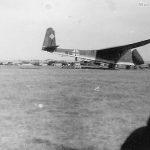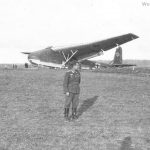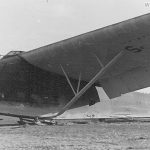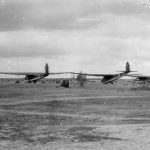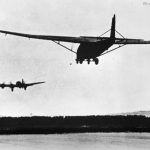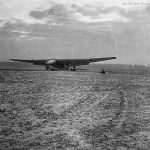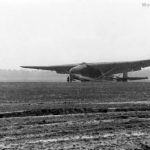Me321 W2-SK on the ground
Me321 W2-SH
Kholm airfiel Russia 1942
Gigant at Kholm Russia 1942
W2-SH Kholm airfiel Russia 1942
Gigant coded W2-SH at Eastern Front 1942
Ju 90 glider tug
Me321 glider
Me321 glider 5
Me321 being towed by a He 111Z
Me321
Me321
Me321
At the end of 1940, during the preparation of the German invasion of the United Kingdom (Operation Seelöwe) the German High Command (OKH) expressed the need for a heavy transport aircraft capable of carrying 130 equipped infantrymen, which was not possible on a landing craft. Choosing a heavy transport glider was based on the concern to establish and secure a bridgehead in enemy territory in the shortest possible time. The capture of the Ében-Émael fort by a German airborne operation on 10 May 1940 was proof for the Wehrmacht staff of the crucial role of gliders in this type of strategy. Ironically, the Allies were to prove them right during the Normandy landings in 1944.
Under the direction of Josef Fröhlich, the aircraft was constructed under great time pressure within three months.[On February 25, 1941 glider made its maiden flight. Due to a lack of powerful aircraft, it had to be towed by three Bf 110s (so-called Troika Schlepp). Very dangerous practice for fighters, who had to fly in perfect formation, and which monopolized more useful fighter aircraft on other fronts. Later, Ju 90 and He 111Z were used for this purpose, which were capable of towing even fully loaded Me 321s. Some He 111Z had rocket boosters attached to assist the takeoff.
The first four aircraft were taken over by the Luftwaffe in May 1941. Following completion of the 100 Me 321 A-1 production gliders, Messerschmitt received a contract for the Me 321 B-1. This variant differed by having a wider flight deck to accommodate a pilot and co-pilot, A-1 being flown by one pilot. By the time this contract for 100 aircraft was completed in early 1942. By September 30, 1941, 49 of 100 aircraft ordered had been delivered by Messerschmitt-Werke in Leipheim and 64 of 100 ordered had been delivered from Obertraubling. The last two aircraft were taken delivery of in April 1942, making a total of 200 production aircraft built. Glider debuted on the Eastern Front in late 1941 where it was used mainly for logistics support in the rear areas.
The powered version of the cargo glider first entered service in April 1942 with four engines. It became apparent that this model was too weakly powered, so the further development Me 323 V2 was equipped with six engines.
